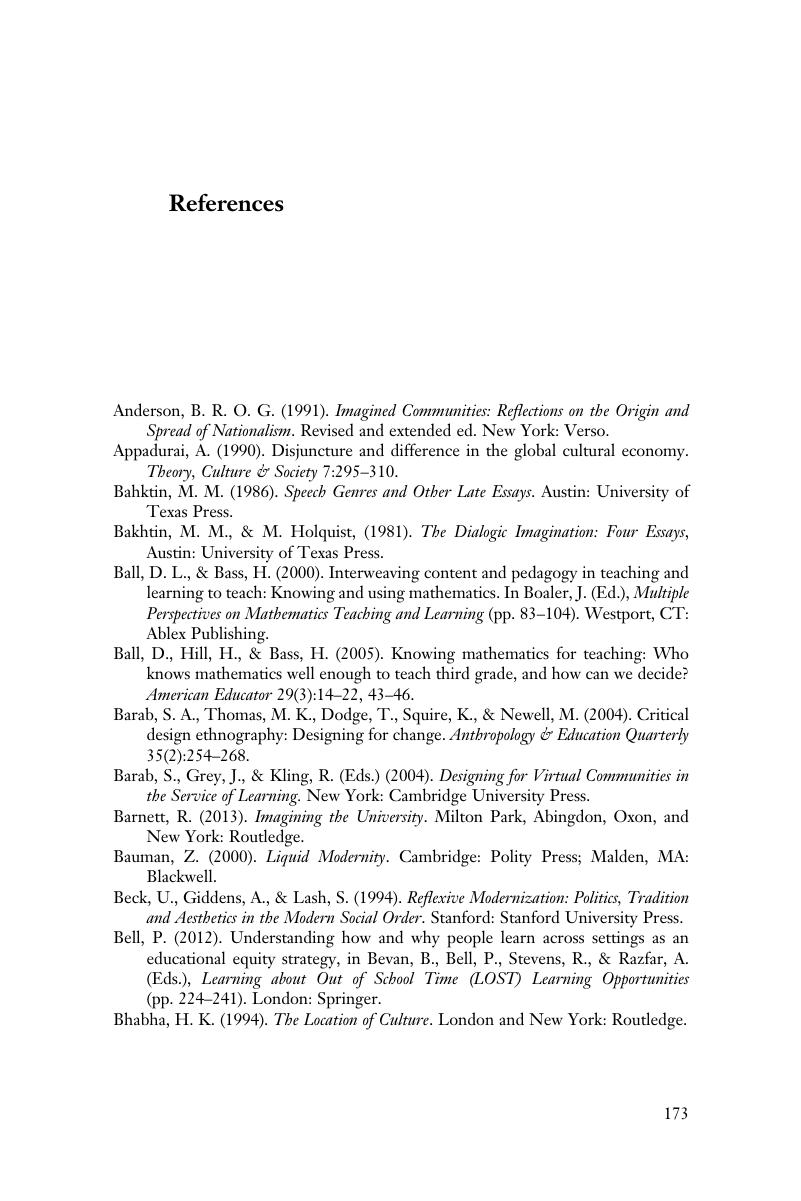Book contents
- Inside Mathforum.org
- Inside Mathforum.org
- Copyright page
- Contents
- Figures
- Acknowledgments
- 1 Introduction
- 2 Ethnography with a Leading Internet-Based Educational Center
- 3 History of the Math Forum
- 4 Possibilities and Their Foreclosure in the Digital Educational Economy
- 5 Mathematical Conversations and Mathematical Thinking
- 6 Mentoring Students and Faculty with Digital Technology
- 7 Noticing & Wondering in a Mediated Environment
- 8 Space, Affinity, and Consciousness
- 9 Identity and Online Interaction
- 10 Conclusion
- References
- Index
- References
References
Published online by Cambridge University Press: 14 September 2017
- Inside Mathforum.org
- Inside Mathforum.org
- Copyright page
- Contents
- Figures
- Acknowledgments
- 1 Introduction
- 2 Ethnography with a Leading Internet-Based Educational Center
- 3 History of the Math Forum
- 4 Possibilities and Their Foreclosure in the Digital Educational Economy
- 5 Mathematical Conversations and Mathematical Thinking
- 6 Mentoring Students and Faculty with Digital Technology
- 7 Noticing & Wondering in a Mediated Environment
- 8 Space, Affinity, and Consciousness
- 9 Identity and Online Interaction
- 10 Conclusion
- References
- Index
- References
Summary

Information
- Type
- Chapter
- Information
- Inside Mathforum.orgAnalysis of an Internet-Based Education Community, pp. 173 - 180Publisher: Cambridge University PressPrint publication year: 2017
